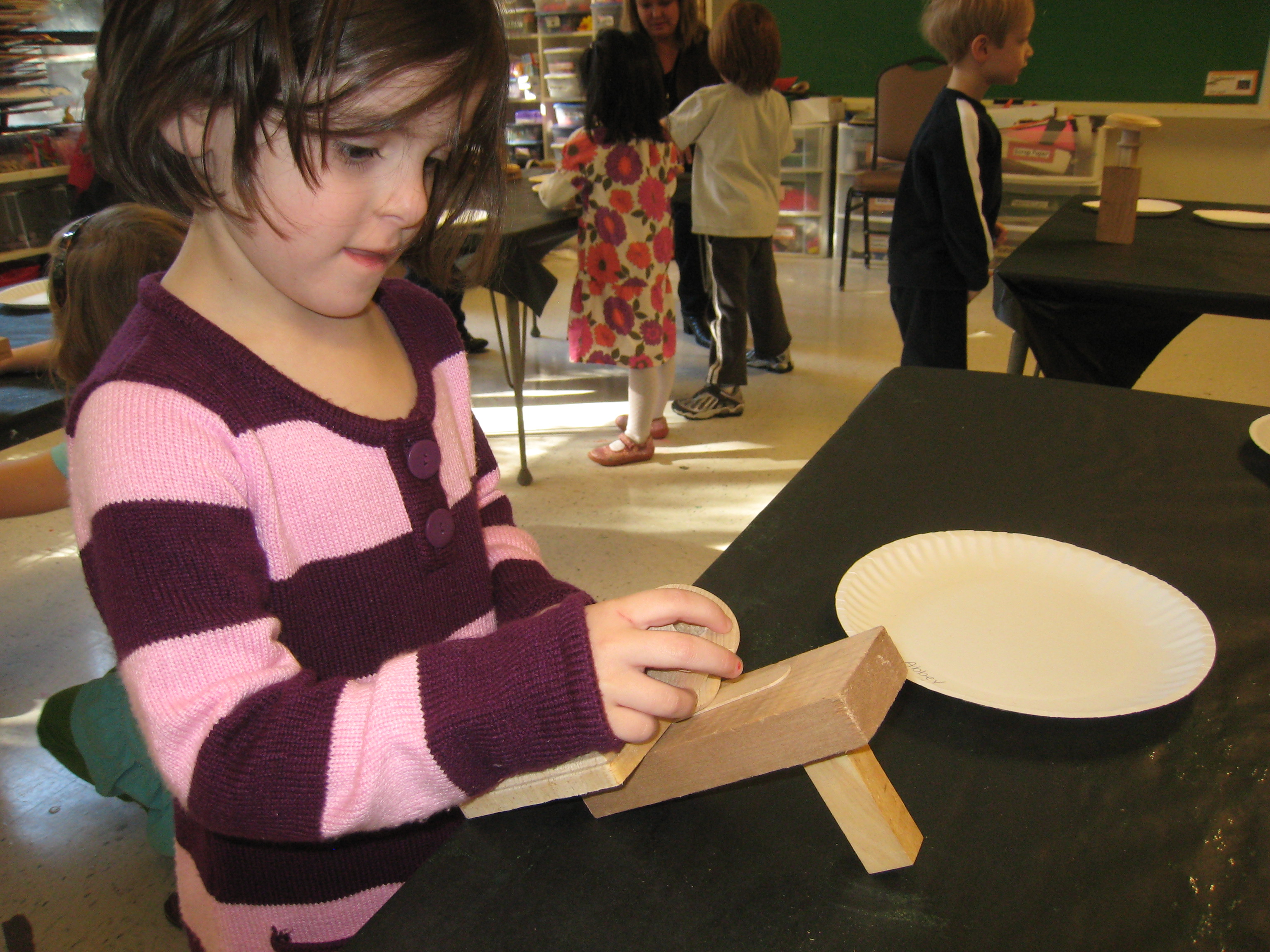One goal for the Teaching for Creativity series is to present the voice of other educators who can share insights and approaches to teaching that nurture creative behavior. Let me introduce you to Susan Stein, art teacher at Temple Emanu-El Preschool in Dallas, Texas and participant during the DMA’s 2011 Summer Seminar. Susan shares with us a sculpture exercise that supports the development of persistence and innovation in her young students.
There are five different shaped pieces of wood in front of each child.
“Can we trade pieces?” No.
“Can I have more pieces?” No.
“Can I just use some of the pieces?” No, you need to use all five pieces.
What’s with all the “no’s”? Isn’t creativity about making your own rules, about not staying in the lines, about “yes”? As it turns out, some measure of boundaries actually promotes creativity through problem solving. When every option is available, we have too many choices, and this often causes us to go off our path. When there are some rules, as is mirrored in life, we feel we have someplace to begin, a structure to hang onto, and can more readily achieve our goals. Without rules you get chaos, with too many rules you get dictatorship. Guidance with flexibility is the key.
The children arrange their pieces into sculptures without gluing anything together. A few children do their first sculpture in five seconds and announce that they are done. I nonchalantly knock their sculpture down and tell them to arrange a new sculpture in a different way. I don’t want them to get attached to their first idea. I look for each child to rearrange at least ten times. The more times they create arrangements, the more chances they take, and the more creative they get. They will eventually try placing big pieces on top of little ones, tilting pieces, and placing pieces to span a gap between two others. It is fascinating to observe!
Rearranging the same elements also lets you see the problem from different perspectives and in the process create new solutions. An example of this happens when you rearrange your Scrabble tiles and a word “magically” comes to you.
This process of rearranging again and again creates persistence. All innovative people cultivate persistence. You have to be willing to experiment with many ideas in order to find the ones that work best. Thomas Edison tried over three thousand filaments for his light bulb before he found even one that worked well.
After about fifteen minutes I announce that when they have an arrangement they are happy with, they can glue the pieces together. They are anxious to do so!
Many thanks to Susan for contributing to this blog and the dialogue about creativity. You can contact Susan at Susan@Art-Experiences.com for more information about this exercise and workshops that she conducts.
Read about another preschool classroom in the August 2011 Teaching for Creativity post by Shadan Price. What is happening in your learning environment? Share your ideas and experiences with us.
Nicole Stutzman
Director of Teaching Programs and Partnerships

This is a fabulous project. I can imagine how much more proud the students are after trying out different sculptural arrangements before settling on “THE one.” Thanks for the inspiring post!
Thank you for this teaching creativity blog! You have given me lots of food for thought! Keep it going!!!!